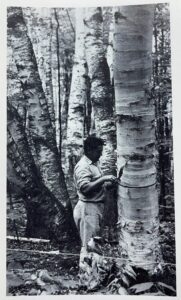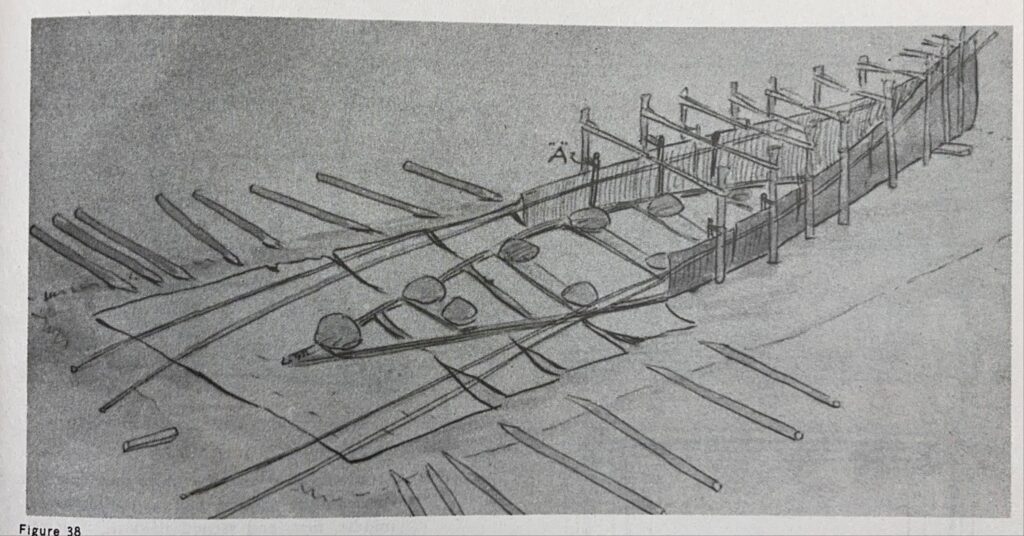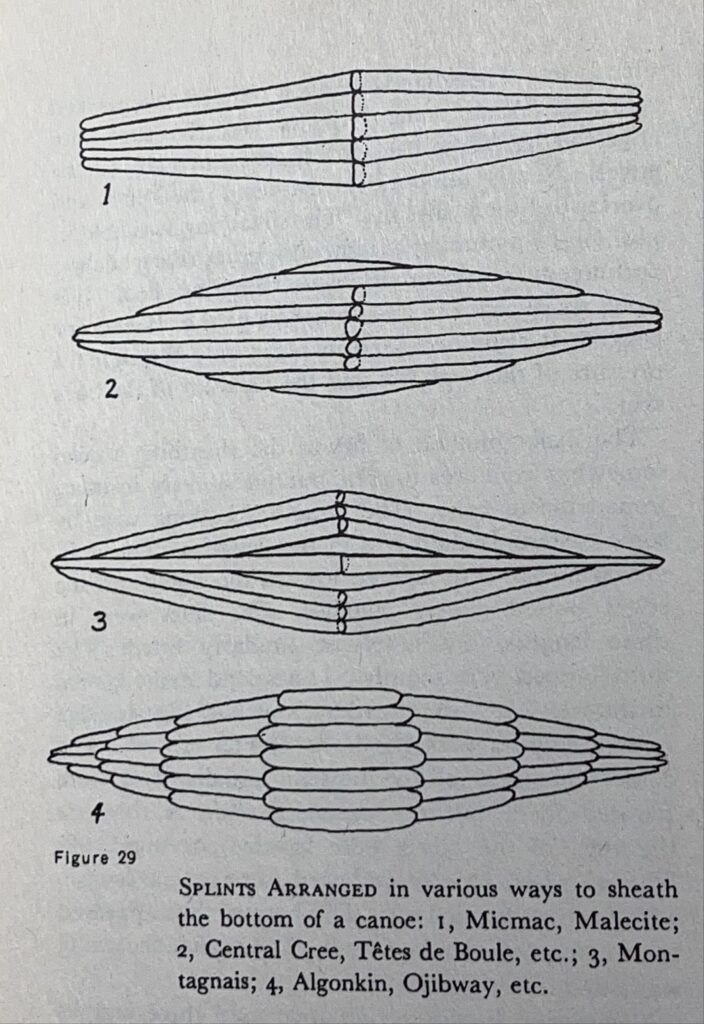A Little History of the Birchbark Canoe

A 16-inch paper birch, large enough to make a small canoe, Silvics of Forest Trees of the United States.
A few weeks ago, we took a quick look back at the North American kayak as noted by early Europeans who visited the far North Country, and now recorded in the book “Bark Canoes and Skin Boats of North America” by Edwin Adney and Howard Chappelle. Today, let us consider what has been documented in the same book for the birchbark canoe.
The early European explorers were quite impressed with the Native bark canoe. Native People, with only a couple of paddlers and some cargo, would routinely pass the clunky wooden English and French rowboats and whaleboats propelled by twice as many oarsmen. When Champlain attacked the Iroquois on what is now Lake Champlain, he found Natives had bark canoes capable of carrying 10-18 men. The largest canoes the Europeans encountered could carry about 30 paddlers.
All of the early writers were also impressed with how lightweight the bark craft were; a small canoe could be portaged by one man for miles. The craftsmanship was also noteworthy. But beyond that, Adney notes with dissatisfaction that the early European letters and journals contain almost no other useful information regarding design, materials, construction methods or handling of the Native bark canoe. He copies a couple of the drawings available and any 5-year old child with a crayon could have done better.
It was not until the era of our uncivil war that any accurate bark canoe details begin to appear in public and private literature, and by then Natives had mostly replaced their stone and bone toolkits with steel tools. So it is not clear whether the undocumented craft of 1700 were built the same way as the well-documented ones of 1900.
The Europeans, then and now, especially admired the birchbark canoe. Notably lightweight and strong, a 50-pound birchbark could carry a half-ton load. But other species were also used and some builders seemed to search more for an individual tree from which a large slab of pliable unblemished bark could be peeled away in the spring. Adney mentions several times that the Iroquois of Upstate New York sometimes used elm bark.
The peeled bark slab, destined to become a one-piece skin over the whole canoe, was then gently folded and tied into a large, loose bundle and carried off to a construction site at the village. The construction method for the bark canoe was the opposite of that for the kayak. The kayak began as a wooden frame and the skin cover was then stretched and wrapped over it. The bark canoe began as a flat slab of bark, which was then trimmed and gently folded into a canoe shape while individual framing members were added along the way to hold that shape.
The proceeding illustration by Adney shows the birchbark canoe evolving from one end. Rocks hold the floor in place, and gores (wedge shapes) are cut from both sides to accommodate the bending without kinking. As U-shaped framing ribs are added to wrap the bark up the sides, the shape is held in place by temporary opposing outer stakes tied in pairs. Premade frames also get tucked into the front and back to hold the curvature there. Long slender strips of wood (the “gunwales,” in English) then run along the top edge, front to back, to tie all the rib tops together. All of the bark seams are then sewn together.

Adney illustration of the evolution of the birchbark canoe, Silvics of Forest Trees of the United States.
The black spruce and tamarack trees grow on the edges of swamps where the soggy soils have no oxygen below a few inches. So these species grow long slender roots, which run just below the surface of the mud and muck, and are easily pulled by hand. Adney mentions 20-foot long pieces, which were peeled and trimmed to produce long slender cords for the sewing and lashing. The sewn seams are then waterproofed by coating them with conifer resins such as pine pitch or spruce sap.
The birchbark canoe is too delicate to just step into when in the water, so floorboards need to be added to spread out the weight of people and cargo across several ribs. Each tribe Adney studied had their own preferred pattern of floorboards, all of which were made of thin lightweight wooden slats that Adney called splints.

Adney’s illustration and tribal attribution of several floorboard patterns, Silvics of Forest Trees of the United States.
The geological and archeological record is nearly silent regarding North American bark canoes and skin kayaks prior to European contact because they are so frail and readily biodegradeable. But their function, efficiency and graceful lines are remarkable, suggesting a long learning curve to perfect all the little techniques documented by Adney and Chappelle. So it is reasonable to assume that they were being made and used well before 1492.



